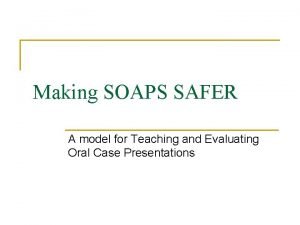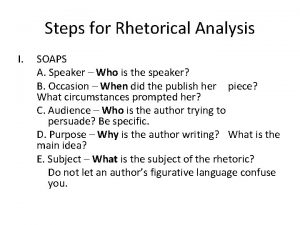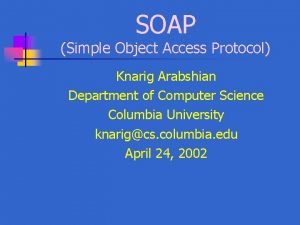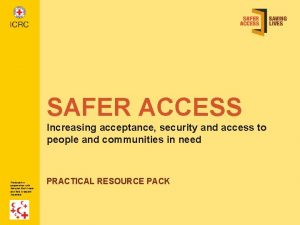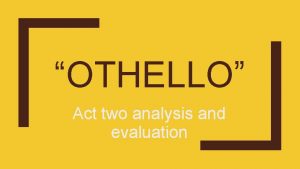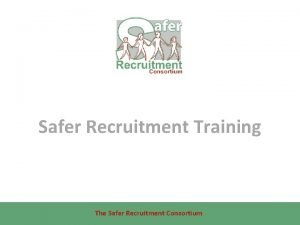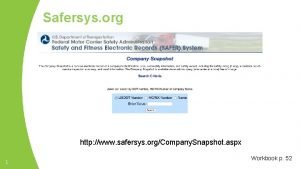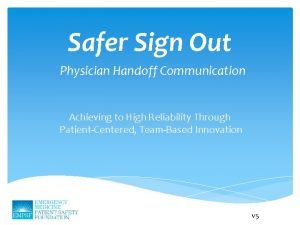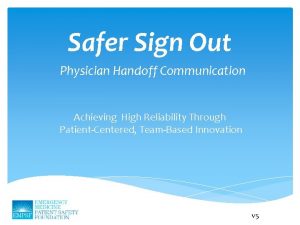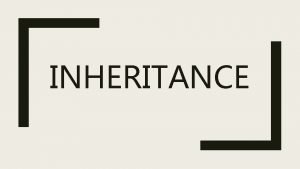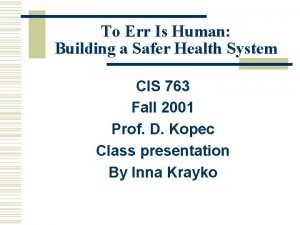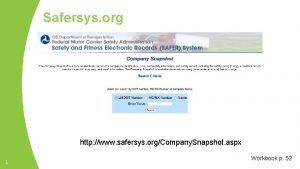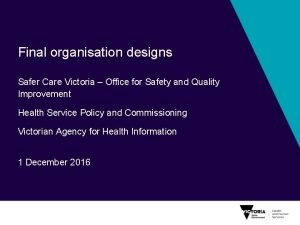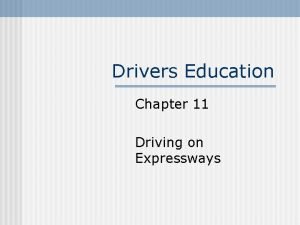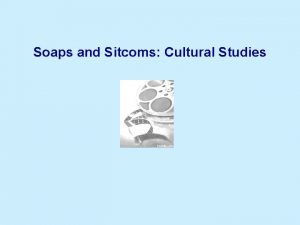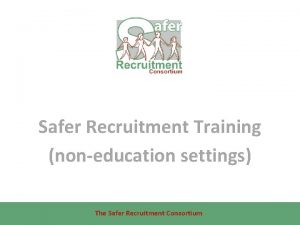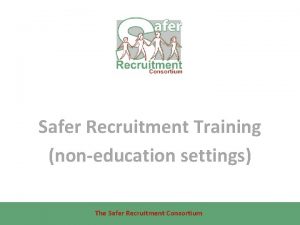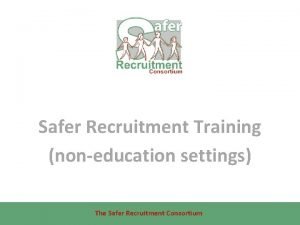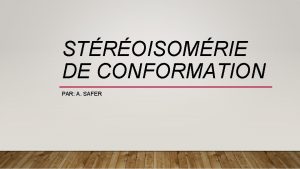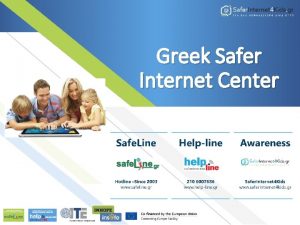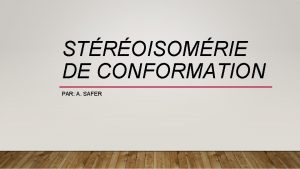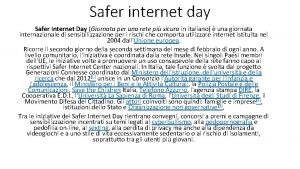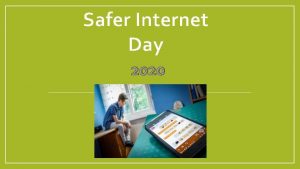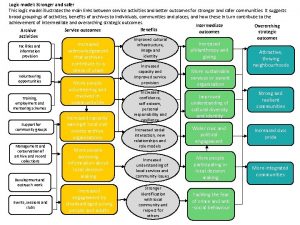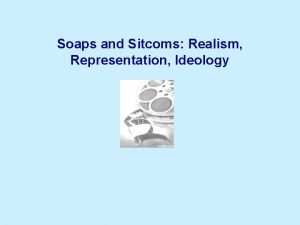Making SOAPS SAFER A model for Teaching and





































- Slides: 37

Making SOAPS SAFER A model for Teaching and Evaluating Oral Case Presentations

Faculty n n n Eric H. Green Linda De. Cherrie Mark Fagan Warren Hershman Brad Sharpe Jeffrey Wiese n In absentia q q q Jeffrey Greenwald Sandhya Wahi-Gururaj Nancy Torres-Finnerty For more information contact Eric H. Green MD, MSc ergreen@montefiore. org 718 -920 -5619

Context n Increasing emphasis on patient-doctor communication. q q n ACGME competencies. USMLE Clinical Skills Assessment. Premium on accurate, pertinent and cogent MD to MD communication. q q Dizzying pace of clinical care. Frequent patient ‘handoffs’---RRC Work Hours Regulations, Night Float Systems.

“This is not easy” n Presentation skills are a complex synthesis: q q Knowledge and experience. Clinical reasoning. Speaking skills. Expectations.

Important skill but execution is suboptimal n n n Try to set high standards—present like Lincoln at Gettysburg. Access to colleagues. Can open the door or… Bad breath

Presentations not fulfilling their purpose n n Ongoing work at a number of institutions--- BU, Brown, Einstein, Mount Sinai, Tulane, UCSF Draw upon your experiences

Workshop n n Identify and build upon some of the successes. Present a model on teaching and evaluating presentations. Use some video vignettes to apply the model. Encourage you to identify how you will apply this learning at your institution.

What are your experiences?

Our Model: Making SOAPS SAFER

Teaching & Evaluating Oral Presentations is complex n Bad presentations are obvious q n Next questions q q q n “I know it when I see it” What was good and bad about it? What knowledge, skills or attitude deficit caused this pattern? How can this deficit be remediated? Challenges q q Many things wrong Where to start

Schematic model: What usually occurs How can it be fixed? Recommend changes

Schematic model: Proposal What is good and bad? Clarifying Questions How can it be fixed? Cite specific examples What caused this? Recommend changes

Identifying Strengths and Weaknesses n 5 basic qualities of an oral presentation q n n SOAPS Frame evaluation and feedback Provide a basis for didactic instruction

5 Basic Qualities of an Effective Presentation: SOAPS n Story: Identify and describe complaints n Organization: Facts are where the listener expects. n Argument: “Makes the Case” for assessment and plan n Pertinence: Only includes information relevant to the assessment and plan n Speech: Fluent, well spoken

Story n Key elements q q q n Accurate Detailed Chronologic Problems: q q “Telegraphed” Hard-to-follow

Organization n Key elements q q n Standardized Logical Problems q q “All over the place” “Worksheet”

Argument n Key elements q q n Commits to a patient-specific assessment/plan Presentation leads listener to this conclusion Problems q q “Scavenger Hunt” generic

Pertinence n Key elements q q n Relevant facts included Irrelevant facts excluded Problems q q “All inclusive” Smorgasbord

Speech n Key elements q q n Speed and tone Spoken, not read Problems q q “Garbled” Read

Schematic model: Proposal SOAPS What is good and bad? Clarifying Questions How can it be fixed? Cite specific examples What caused this? Recommend changes

What deficit caused this n Most problems in presentation can have multiple etiologies q 5 potentially correctable deficits (SAFER)

Possible Correctable Deficit: SAFER Speaking: Poor elocution skills n Acquisition of Knowledge: Topic specific knowledge n deficits (facts or experience) Facts: Reports incorrect facts or omits facts n Expectations: Unaware of needs of listener or n standards n Reasoning: Omits or incorrectly applies clinical reasoning

What deficit caused this n Most problems in presentation can have multiple etiologies q n 5 potentially correctable deficits (SAFER) Use iterative questions

Speaking n Clarifying questions q n Tell me in your own words what you think when…. Potential areas of remediation q q Insufficient preparation time Anxiety

Acquisition of Knowledge n Clarifying Questions q n Explain for me how…? Potential areas of remediation q q Knowledge deficit (basic science or beyond) Over reliance on previous experience (n=1 trials)

Facts n Clarifying Questions q n Did you obtain any information about…? Potential areas of remediation q q Poor data acquisition (Hx or PE, “night float”) Poor data retention (memory, notes, fatigue, patient volume)

Expectations n Clarifying questions q n What information do you think the attending needs to… Potential areas of remediation q q Incomplete or conflicting knowledge regarding conventions Inaccurate beliefs regarding needs of the listener

Reasoning n Clarifying Questions q n How did you interpret…? Potential areas of remediation q q Poor understanding of clinical reasoning techniques Incomplete understanding of appropriate applications for clinical reasoning

Schematic model: Proposal SOAPS What is good and bad? Cite specific examples +/- SAFER Clarifying Questions How can it be fixed? What caused this? Recommend changes

Schematic model: Proposal SOAPS What is good and bad? Cite specific examples +/- SAFER Clarifying Questions learner suggests remediation strategies What caused this? Support and follow-up

Pearls for the learner n Story: q Think of the oral case presentation as building a case as an attorney would in a court of law. You are providing information to allow others to come to the assessment and plan you did. You are also providing enough information to have them help you care for your patient.

Pearls for the learner n Organization q q Starting with the chief complaint orients your listeners and prepares them for what follows. “Don’t eat the dessert before the salad” – never change the basic format of the presentation – it is always the same. (ID, HPI, PMH, MEDS, ALL, SH, etc. ). Use standard headings to keep your listeners oriented. The relevant past medical history is. . . On physical exam I found… In summary. . . If you put family history, social history, or parts of the review of systems into the history of present illness, there is no need to repeat it later in presentation

Pearls for the learner n Argument q n An oral presentation is supposed to be a bedtime story not a suspense thriller. Everything is designed to support an assessment and plan that should never be a surprise. Pertinence q q If you’re not sure if a detail is relevant leave it out of the oral presentation. Your listener can always ask for more. Think of the oral presentation as the “Cliff’s notes” version of the written H&P – it includes all the details you need to understand the plot but not much more.

Pearls for the learner n n Speech q Practice your presentation at least once before giving it. General: q If you lose people's attention, think about what part of the presentation lost them. q If preceptors keep asking for the same types of information after your presentation then include it! q The assessment and plan is a wonderful opportunity for you to demonstrate your clinical reasoning and medical knowledge. Don't miss this chance to shine! q Always know what your listener is expecting to hear – 2 minutes or 7 minutes? All of the labs or just the abnormal ones? q Never “act out” the physical exam while you are presenting. Use your words, not your hands.

Pearls for the teacher n Teaching q q Remind learners this is a standard of the medical profession that they will be using throughout their careers. This is not the teacher’s personal style or just another requirement to pass a rotation. Try to avoid teaching solely by example (“you could say it like this. . . “). Instead, identify the deficit and have the learner try again.

Pearls for the learner n Evaluation q q q n Use your interactions with the learner outside of the presentation to help inform you as to which deficit they have. Allow the learner to identify their weaknesses before you comment Concentrate on identifying the biggest problem in the presentation and start to intervene there. Feedback q Take notes during a presentation. When providing feedback, refer to specific things the learner said.

Thank you!
 Soaps model
Soaps model Soapstone examples english
Soapstone examples english Saponification number
Saponification number How to write rhetorical analysis essay ap lang
How to write rhetorical analysis essay ap lang Soaps rhetoric
Soaps rhetoric Soaps letter from birmingham jail
Soaps letter from birmingham jail Trientry
Trientry Simple object access protocol
Simple object access protocol Soaps rhetorical analysis
Soaps rhetorical analysis Conflict management seminar
Conflict management seminar Safer modell
Safer modell Phases of micro teaching
Phases of micro teaching War making and state making as organized crime
War making and state making as organized crime Making best use of teaching assistants
Making best use of teaching assistants Safer trial
Safer trial 8 elements of safer access
8 elements of safer access Othello act 2 summary
Othello act 2 summary Engineering a safer world
Engineering a safer world Safer recruitment consortium
Safer recruitment consortium Characteristics of expressway driving
Characteristics of expressway driving Safer snapshot fmcsa
Safer snapshot fmcsa Physician sign out
Physician sign out Safer sign out form acep
Safer sign out form acep Single level inheritance is safer than
Single level inheritance is safer than Engineering a safer world
Engineering a safer world To err is human building a safer health system
To err is human building a safer health system Safersys.org company snapshot
Safersys.org company snapshot Safer web mc
Safer web mc Dvsat questions
Dvsat questions Safer care victoria
Safer care victoria Self-driving coalition for safer streets
Self-driving coalition for safer streets Safer places scheme
Safer places scheme Why are expressways safer
Why are expressways safer Is making inference simply making a guess
Is making inference simply making a guess Kontinuitetshantering i praktiken
Kontinuitetshantering i praktiken Novell typiska drag
Novell typiska drag Tack för att ni lyssnade bild
Tack för att ni lyssnade bild Vad står k.r.å.k.a.n för
Vad står k.r.å.k.a.n för
